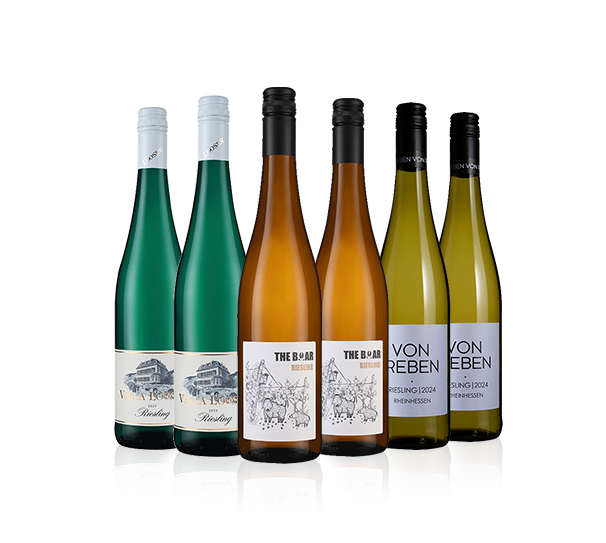Filter by
- Supple, silky Pinot Noir with pretty berry fruit and an elegant smoky edge, from Germany's Pfalz£18.99 per bottle
- Classic off-dry Riesling Kabinett from Mosel. Fresh and fruity with hints of peach and grapefruit£8.99 per bottle
- Silky, barrel-aged Pinot Noir from Germany's warm Pfalz slopes. Dark cherry and spice notes£15.99 per bottle
- Once known as Zeppelin wine, this is a lime-crisp, off-dry Riesling from a top Mosel producer£14.99 per bottleSAVE £2.50
- Discover just how exhilarating crisp German dry whites can be with this green-apple-fresh Riesling£10.99 per bottle
- Eureka – it’s Riesling! Find your new favourite white in this case of German classics£65.94 per caseSAVE £16.00
- Peachy-fresh, lightly spiced, dry Pinot Gris from a leading modern German winemaker, Ernst Loosen£14.99 per bottle
- Once known as Zeppelin wine, this is a lime-crisp, off-dry Riesling from a top Mosel producer£15.99 per bottleSAVE £2.00
- Crisp, vibrant, dry German Riesling with zesty lime finesse from an historic family estate in Pfalz£14.99 per bottle
- A thrilling bone-dry Riesling from one of Germany’s most historic cellars£13.99 per bottleSAVE £3.00
- Superbly balanced, off-dry Riesling with brilliant freshness from a renowned estate in iconic Mosel£13.99 per bottleSAVE £1.00
- Delicious alcohol-free fizz from one of the true greats of German wine£8.99 per bottleSAVE £1.00
- Creamy, rounded pear fruit in this luscious Pinot Blanc from Leitz, German Winemaker of the Year£9.49 per bottleSAVE £4.50
- A thrillingly fresh German Riesling from a historic 350-year-old family estate£15.99 per bottle
- Elegant, supple Pinot Noir brimming with vibrant red fruit from Germany’s Pfalz region£12.99 per bottle
- Fine, dry Riesling bursting with citrus flavour – from the outstanding and charismatic Dr Loosen£13.99 per bottleSAVE £3.00
- Lively, crisp, dry Riesling from Weingut Leitz, a leading modern cellar in Germany's Rheingau£14.99 per bottle
- Dazzling, lime-scented dry Riesling full of zest from a renowned estate in iconic Mosel£13.49 per bottleSAVE £1.50
- Golden, glorious and gorgeously sweet – Mosel magic from one of Germany’s finest winemakers£15.00 per bottle
- Green-apple-fresh Riesling that's crisp and dry – in a miniature bottle£2.99 per bottleSAVE £1.00
- Superb, First Growth Riesling from the ‘hellish’ steep slopes of Höllenpfad, Nahe, and a top estatefrom £36.00 per bottle
- from £26.00 per bottle
- Elegant German Pinot Noir from Ernst Loosen’s Pfalz – ripe, complex and mature£35.00 per bottle
- Top-level Mosel Riesling – pure citrus, stone fruit and mineral finesse£40.00 per bottle






























